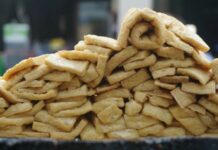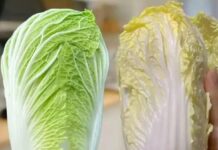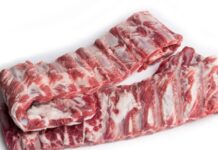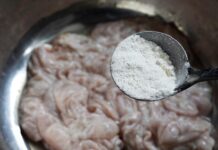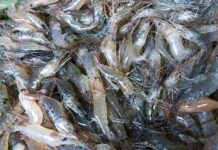Fish Meat Floss
– Color: Natural light yellowish color of fish meat.
– Shape: Small, soft and smooth floss.
– Taste: Sweet and savory taste from chicken, pork, salmon… with a pleasant hint of fat. When chewed, the floss is soft, not tough.
– Soaking in water: When soaked in water, the floss will become soft, without changing color but fading. If you look closely, you can see the fish meat fibers clearly, similar to the color of boiled fish meat.

Cassava Residue Floss
– Color: Lighter color compared to natural meat color, some dark spots.
– Shape: Long fibers, no softness, thicker and rounder compared to fish meat floss.
– Taste: Sweet taste on the tip of the tongue, after a while there will be a strong bitter taste. When chewed, it feels tougher.
– Soaking in water: When soaked in water, the floss immediately changes to a pale white color like cassava residue, with bubbles on the surface.
Additional information: Not moldy or damaged, when making floss, choose fresh ingredients.

Choosing to Buy Floss

We hope that with the above information, we have helped you distinguish between authentic floss and fake floss made from cassava residue. From there, you can make the appropriate choice for your family.











